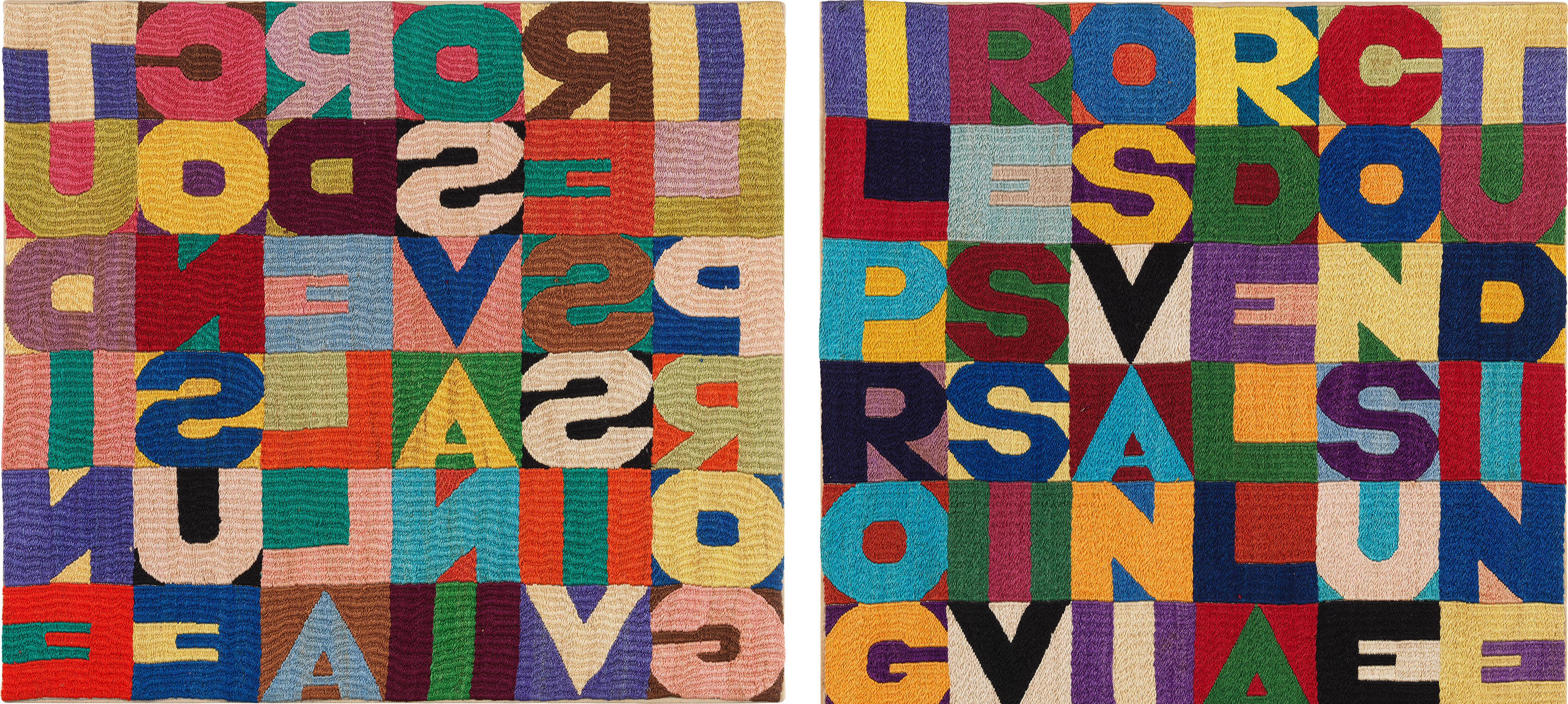

163
Alighiero Boetti
Il Progressivo Svanir Della Consuetudine
signed, inscribed and dated ‘alighiero e boetti L’OPPOSTO IL CONTRARIO L’INVERSO’ PESHAWAR 1988-9’ on the overlap of the left part; signed ‘alighiero e boetti’ on the overlap of the right part
embroidery on fabric, mounted on panel, diptych
left part 32.5 x 36.1 cm (12 3/4 x 14 1/4 in.)
right part 33.3 x 34 cm (13 1/8 x 13 3/8 in.)
right part 33.3 x 34 cm (13 1/8 x 13 3/8 in.)
Executed in 1988-1989, this work is registered with the Archivio Alighiero Boetti, Rome under numbers 10149 and 10150.